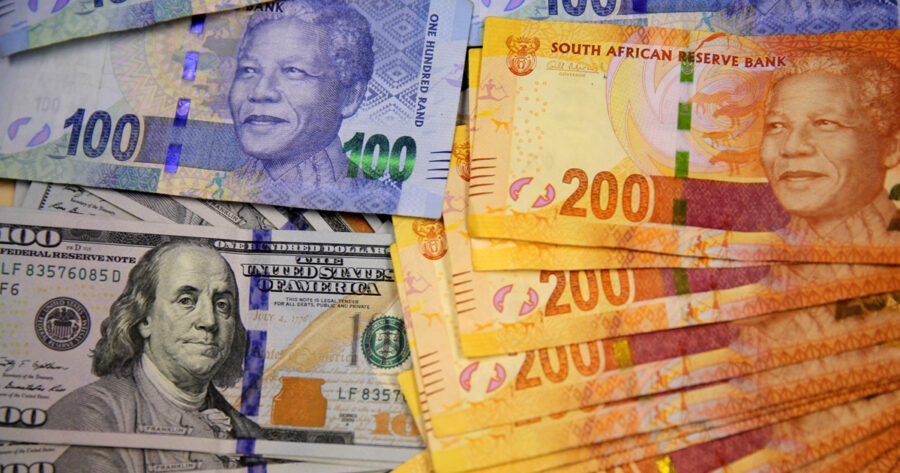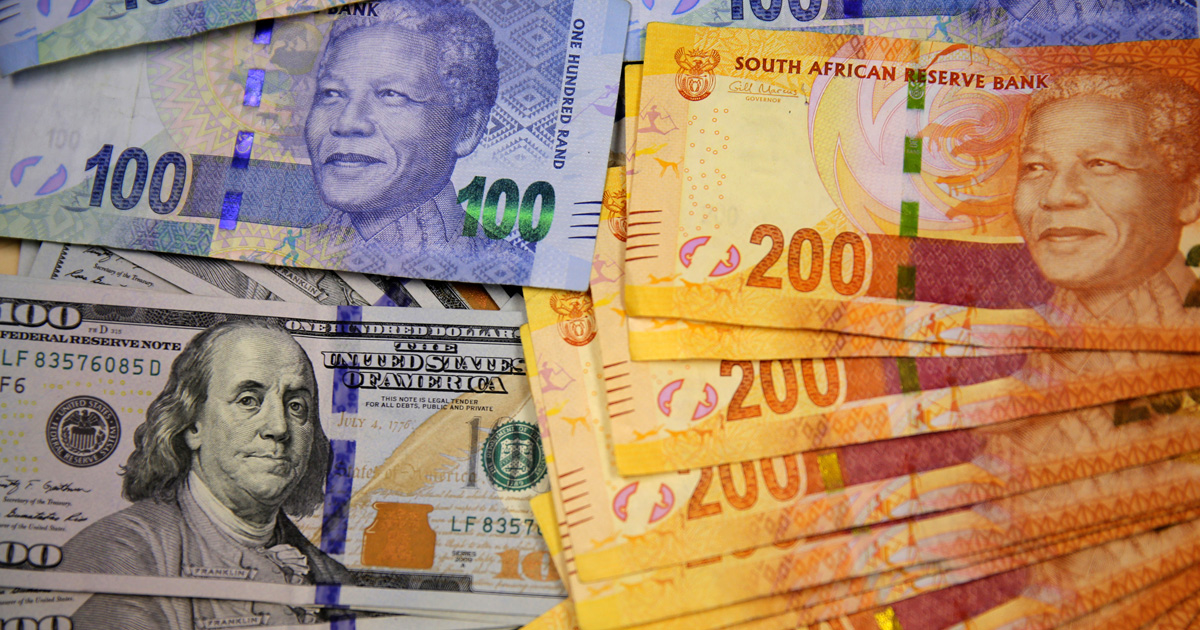
Dollar clawed back its losses: Weak China inflation dents Aussie
Reuters: The dollar clawed back its losses on Monday, recovering from a knee-jerk reaction to data showing U.S. job gains were the smallest in two-and-a-half years, while disappointing inflation figures in China weighed on the yuan and proxies. U.S. DOLLAR CLAWED BACK ITS LOSSES Nonfarm payrolls increased 209,000 in June, figures released on Friday showed, […]

Reuters: The dollar clawed back its losses on Monday, recovering from a knee-jerk reaction to data showing U.S. job gains were the smallest in two-and-a-half years, while disappointing inflation figures in China weighed on the yuan and proxies.
U.S. DOLLAR CLAWED BACK ITS LOSSES
Nonfarm payrolls increased 209,000 in June, figures released on Friday showed, missing market expectations for the first time in 15 months. However, details in the employment report reflected persistently strong wage growth, pointing to still-tight labour market conditions. The U.S. dollar marched higher in Asia trade after tumbling nearly 1% against a basket of currencies on Friday in response to the data, and rose particularly against the Japanese yen.
ALSO READ: Who is the richest person in the world today? Top 10 list – 10 July 2023
The greenback was last 0.53% higher at 142.98 yen , having slid nearly 1.3% against the Japanese currency on Friday as U.S. Treasury yields eased. The dollar/yen pair is particularly sensitive to U.S. yields as interest rates in Japan are anchored near zero. “It’s a bit of an unwind from the overreaction that we saw on Friday. There was an overreaction to the nonfarm payrolls report, so it doesn’t surprise me that the yen’s weakening today,” said Joseph Capurso, head of international and sustainable economics at Commonwealth Bank of Australia. Sterling was last 0.25% at $1.2809, after having surged to a more than one-year peak of $1.2850 on Friday, while the euro slid 0.14% to $1.0953. “I certainly don’t trust that U.S. dollar move whether it’s sustained,” Chris Weston, head of research at Pepperstone, said of the dollar’s decline last week. “If you look at the wage data, it was pretty hot and the unemployment number was pretty good.”
The focus now turns to U.S. inflation data due on Wednesday, where expectations are for core CPI to have risen 5% on an annual basis in June. Elsewhere in Asia, data out on Monday showed that China’s factory-gate prices fell at the fastest pace in seven-and-a-half years in June and consumer inflation was at its slowest since 2021, fuelling hopes for further support measures from Chinese authorities. The weak data dragged down the Australian and New Zealand dollars, which are often used as liquid proxies for the Chinese yuan. The Aussie fell 0.4% to $0.66655, while the kiwi slid 0.45% to $0.6181.
ALSO READ: Load-shedding in South Africa approaches end: Minister
The offshore yuan fell about 0.1% to 7.2411 per dollar, while the onshore yuan was roughly 0.2% lower at 7.2340 per dollar. “The softer CPI is still reflecting weak domestic demand while PPI deflation underscores the strains on factories,” said OCBC currency strategist Christopher Wong. “It’s basically saying that China needs stimulus support.”
BRITISH POUND
Reuters: The British pound on Friday edged back towards a two-week high reached against the U.S. dollar the day before, supported by interest rate differentials as Britain looks set to outpace the U.S. and Europe on rate rises this year. The Federal Reserve paused its tightening cycle in June and although it looks likely to resume rate increases this month, it appears closer to the point where it will take stock of past rate increases as inflation shows signs of slowing. In contrast, the Bank of England this month raised the bank rate by half a percentage point and markets are pricing another 150 basis points of tightening by the middle of next year as inflation remains sticky.
ALSO READ: Steel engineer Shocky Nengovhela triumphs over challenges
Consumer price inflation stood at 8.7% in May, unchanged from April and 0.3 percentage points higher than the BoE expected in their May monetary policy report. Stephen Gallo, global FX strategist at BMO Capital Markets, said the pound was “well supported” against the dollar and euro as the market narrowly focuses on rate differentials as opposed to why UK rates are expected to rise further. “When the cure is pricing in 6% plus handle for Bank Rate it’s kind of hard to see FX investors with very small investment horizons shorting sterling aggressively,” Gallo said. “The longer GBP and UK yields stay supported in the short-run because of sticky inflation and a hawkish BoE, most likely the deeper correction lower in GBP later on,” Gallo added.
The pound was last up 0.1% against the dollar at $1.2748, having reached its highest since June 22 on Thursday of $1.2780. Against the euro, the pound rose 0.1%, with the single currency buying 85.35 pence. Stickier inflation has prompted markets to bet that the BoE will need to tighten policy aggressively to rein in inflation, although analysts expect price pressures to ease later in 2023. “The inflation picture should improve later this year, which means some pricing out of BoE rate expectations can come hitting the pound down the road,” said Francesco Pesole, FX Strategist at ING. “For now, it remains hard to see a sustained GBP downtrend.”
SOUTH AFRICAN RAND
Reuters: South Africa’s rand strengthened on Friday as the dollar weakened after U.S data showed job growth slowed more than expected in June. At 1649 GMT, the rand traded at 18.8400 against the dollar, 1.41% stronger than its previous close. The dollar index was last at 102.240, down more than 0.8% against a basket of global currencies. The U.S. economy added the fewest jobs in 2-1/2 years in June, the Labor Department said in an employment report that also showed 110,000 fewer jobs were created in April and May than earlier reported.
ALSO READ: Newspaper front pages from around the world, 10 July 2023
The rand slumped the previous day as the Federal Reserve’s June meeting minutes revealed a hawkish policy stance, prompting investors to move away from riskier assets. On the stock market, the Top-40 and the broader all-share indices closed around 1% higher. However, shares in Telkom fell almost 7% after the company said it had rejected an unsolicited offer led by its former CEO. South Africa’s benchmark 2030 government bond was weaker in afternoon deals, with the yield rising 7.5 basis points to 10.770%.
GLOBAL MARKETS
Reuters: Asian share markets turned mixed on Monday as a surprisingly low reading on Chinese inflation highlighted the troubles in its economy, ahead of data on U.S. inflation and corporate earnings later in the week. Chinese consumer price figures showed a fall in June to be essentially unchanged from a year before, while producer prices slid deeper into negative territory. The miss implies there is plenty of scope to ease monetary policy further, but also underlines the challenge Beijing faces in reflating its economy and avoiding a deflationary spiral.
ALSO READ: ‘Should be a public holiday’: SA reacts hilariously to snowfall
The yuan lost early gains on the news, though Chinese blue chips were still up 0.5% on hopes for a loosening in regulations for the tech sector. Shares in Hong Kong’s Alibaba Group also joined the rally. The gains in China helped MSCI’s broadest index of Asia-Pacific shares outside Japan firm 0.3%. Japan’s Nikkei eased 0.1% in the wake of a higher yen, while South Korea added 0.2%. EUROSTOXX 50 futures dipped 0.1% while FTSE futures held steady. S&P 500 futures and Nasdaq futures both dipped 0.2%, adding to last week’s losses. Earnings season starts later this week with JPMorgan Chase, Citigroup, Wells Fargo, State Street and PepsiCo among the names reporting. “Consensus expects a 9% year/year decline in S&P 500 EPS driven by flat sales growth and margin compression,” noted analysts at Goldman Sachs. “We expect companies will be able to meet the low bar set by consensus,” they added. “Negative EPS revisions for 2023 and 2024 appear to have bottomed and revision sentiment has improved.”
This week also has major data on U.S. consumer prices which is forecast to show headline inflation slowed to its lowest level since early 2021 at 3.1%, down from 9.1% a year earlier. Markets still think the Federal Reserve is likely to hike rates later this month, but a weak CPI might lessen the risk of yet a further move in September. Currently futures imply around a 90% probability of a rise to 5.25%-5.5% this month, and a 24% chance of a move in September. Fed officials have been mostly hawkish in their communications, while markets have also priced in higher rates in Europe and the UK. Canada’s central bank meets this week and markets imply a 67% chance of another hike. The risk of higher global rates for longer has caused havoc in bond markets, where U.S. 10-year yields jumped 23 basis points last week, German yields 24 basis points and UK yields 26 basis points.
ALSO READ: South Africa’s journey to regulate the gambling industry
On Monday, U.S. two-year yields stood at 4.95%, having hit a 16-year high of 5.12% last week. The jump in developed-world yields caused ripples in currency markets, particularly in carry trades where investors borrow yen at super-low rates to invest in high-yielding emerging market currencies. The net result was a rush to close yen short positions which saw the Japanese currency rally across the board last week, though it was struggling to sustain the rally on Monday. The dollar edged back up to 142.46 yen, after sliding 1.3% on Friday, while the euro held at 156.18 yen . The single currency was also firm on the dollar at $1.0956.
One of the most popular carry trades has been short yen and long Mexican peso , and the shakeout saw the peso dive 1.8% on the yen on Friday. In commodity markets, gold was idling at $1,922 an ounce after making a slight gain last week. Oil prices eased slightly, having touched nine-week highs last week as top exporters Saudi Arabia and Russia announced fresh output cuts. Brent fell 49 cents to $77.98 a barrel, while U.S. crude lost 51 cents to $73.35.
ALSO READ: WATCH: SNOW turns SA landscapes into a glistening white paradise [Videos]
